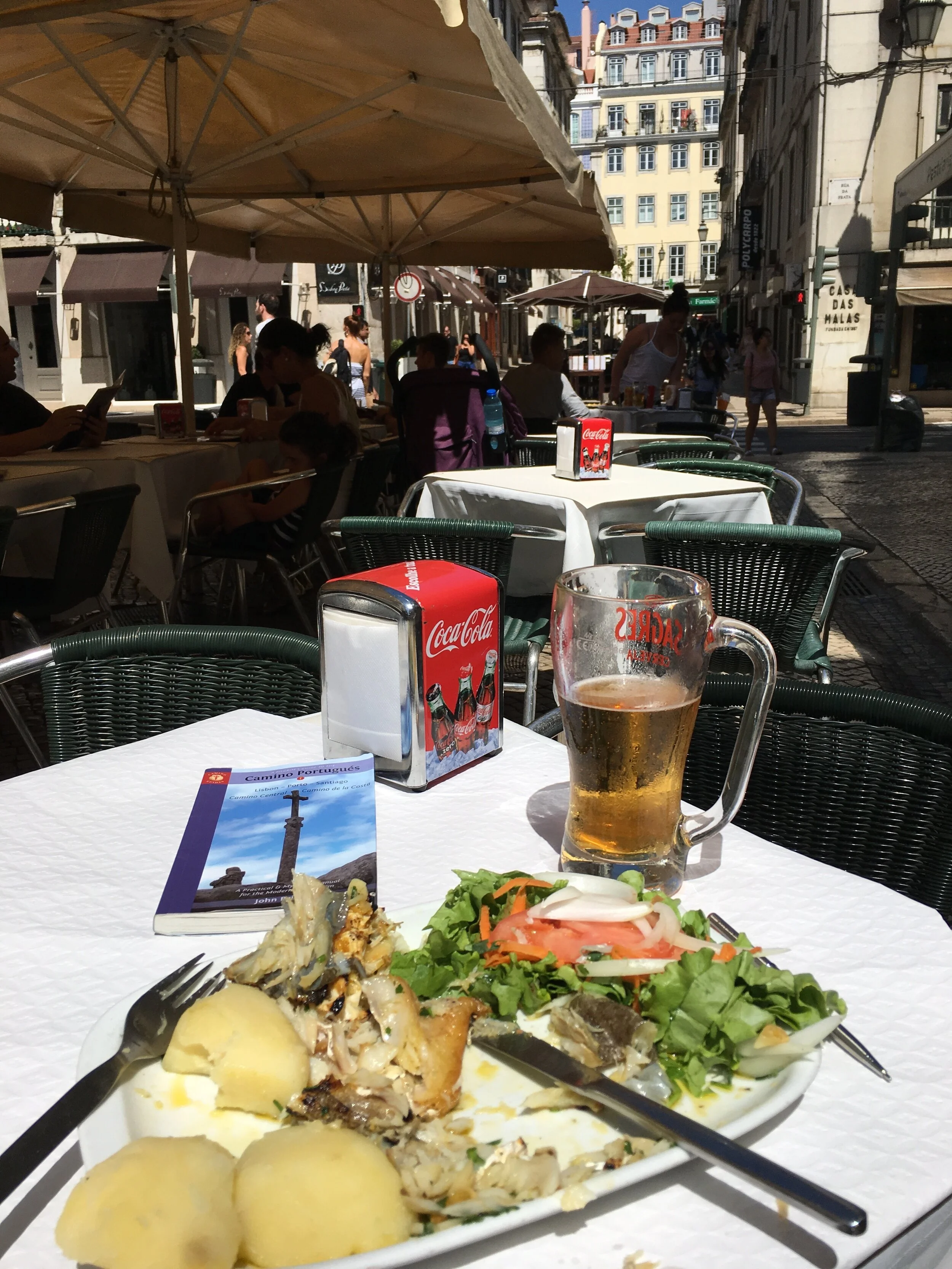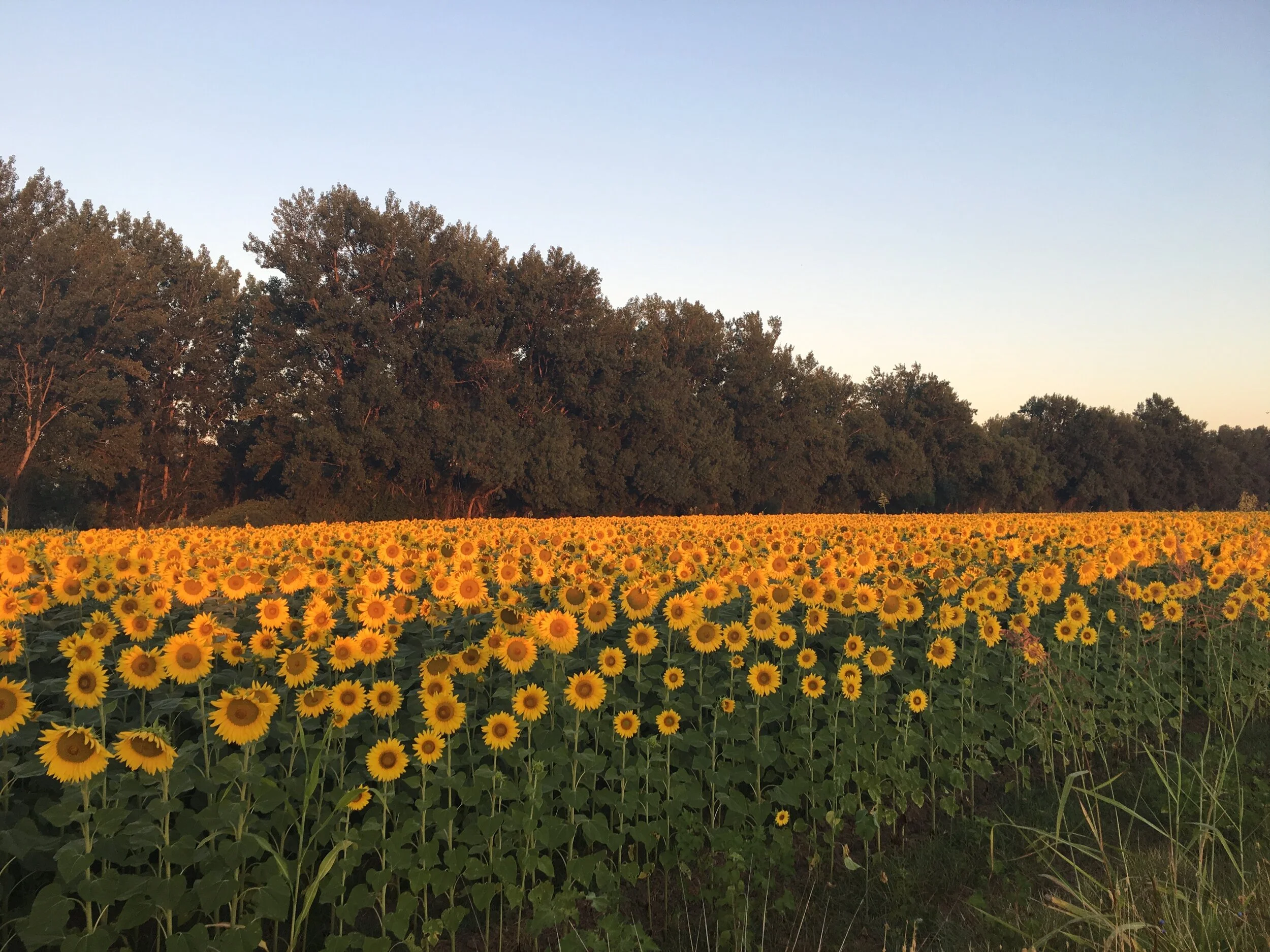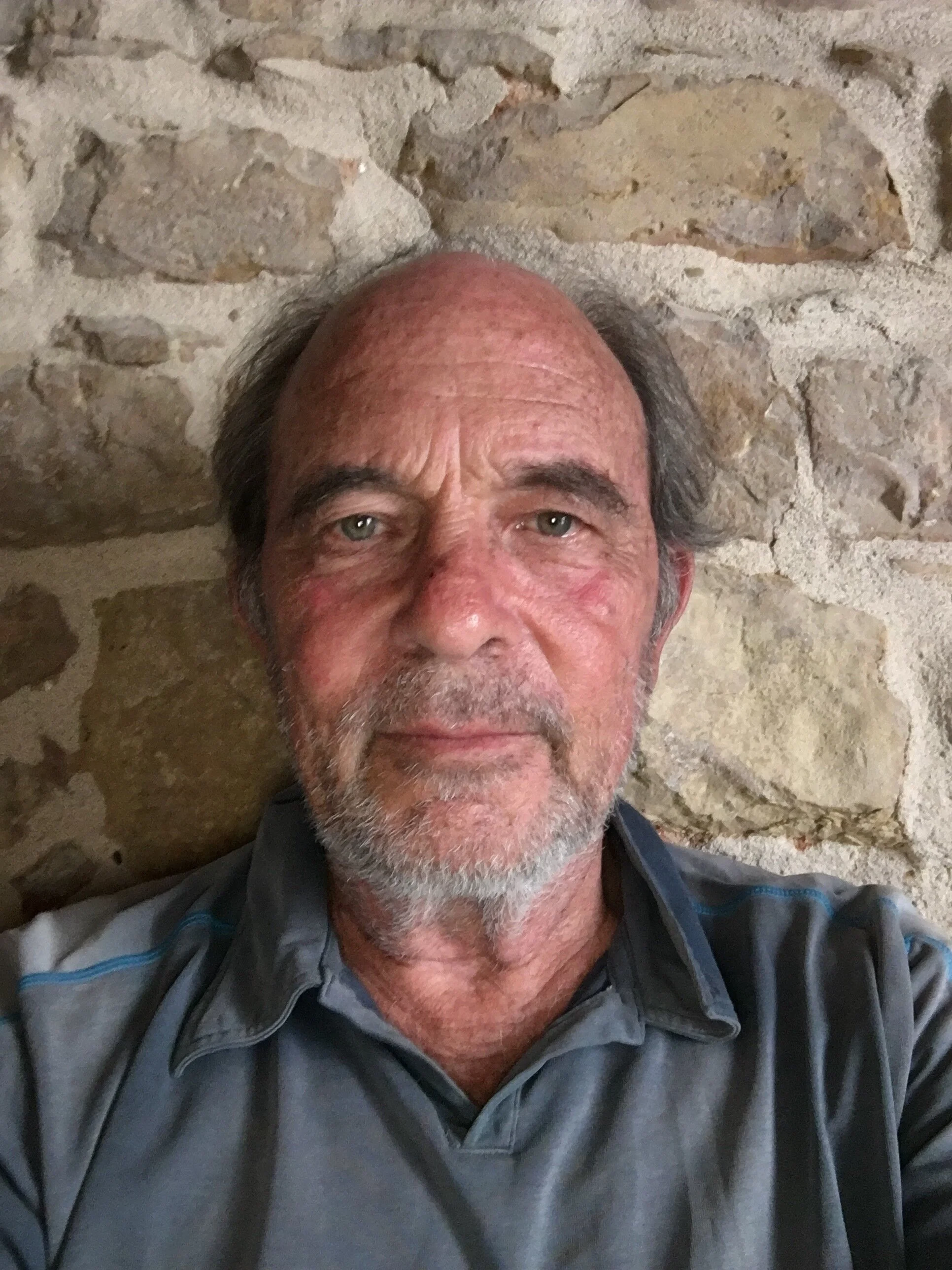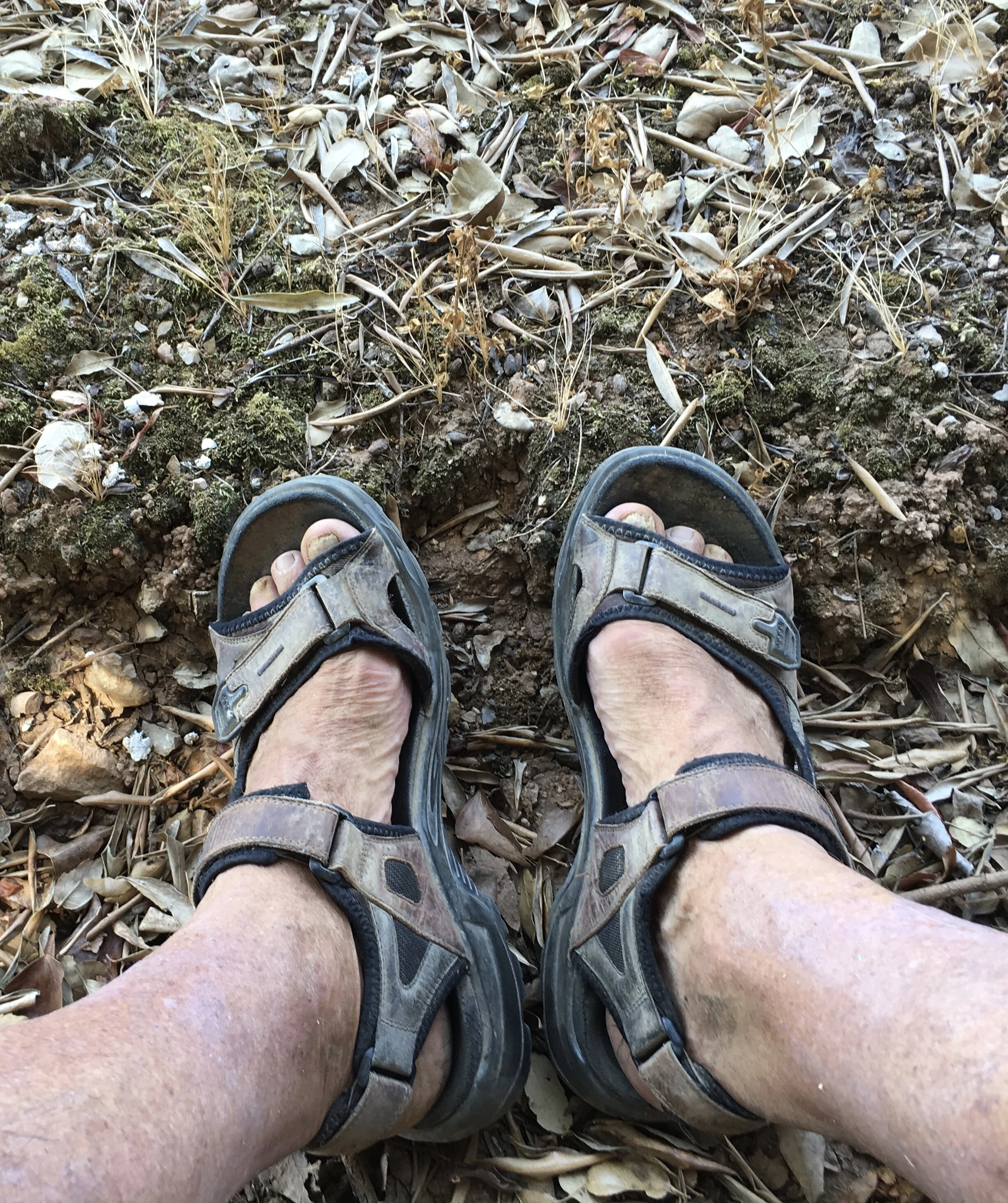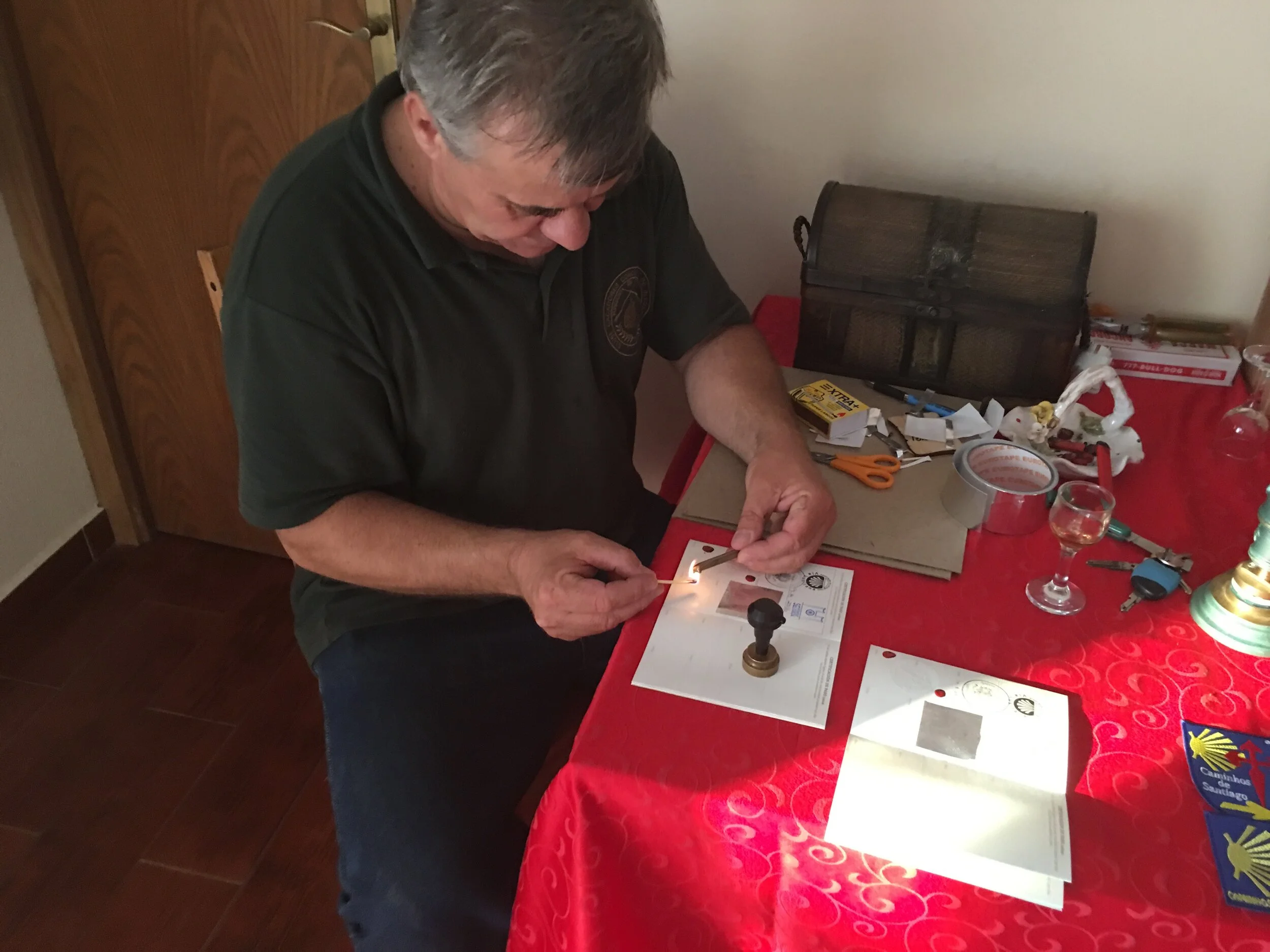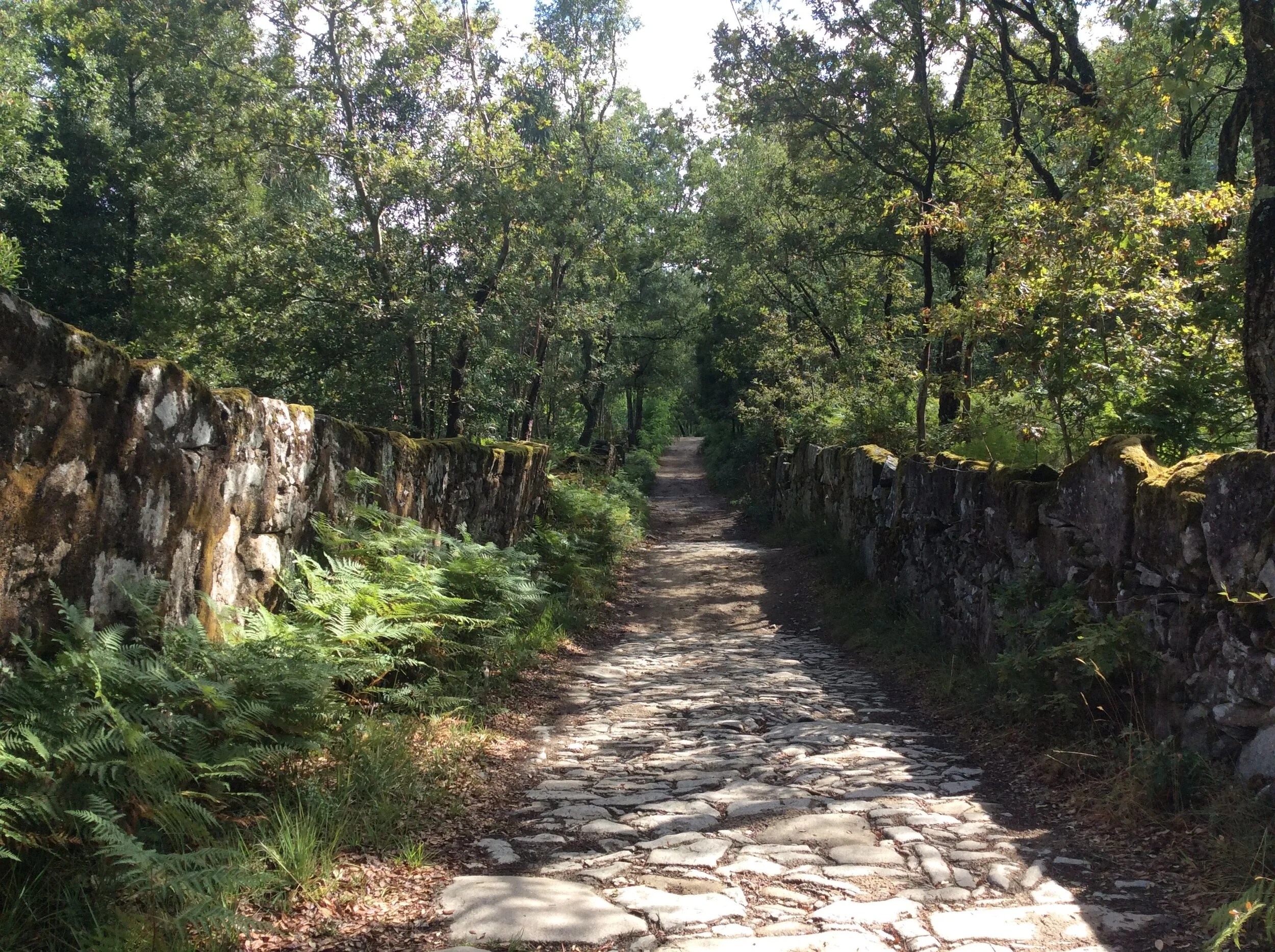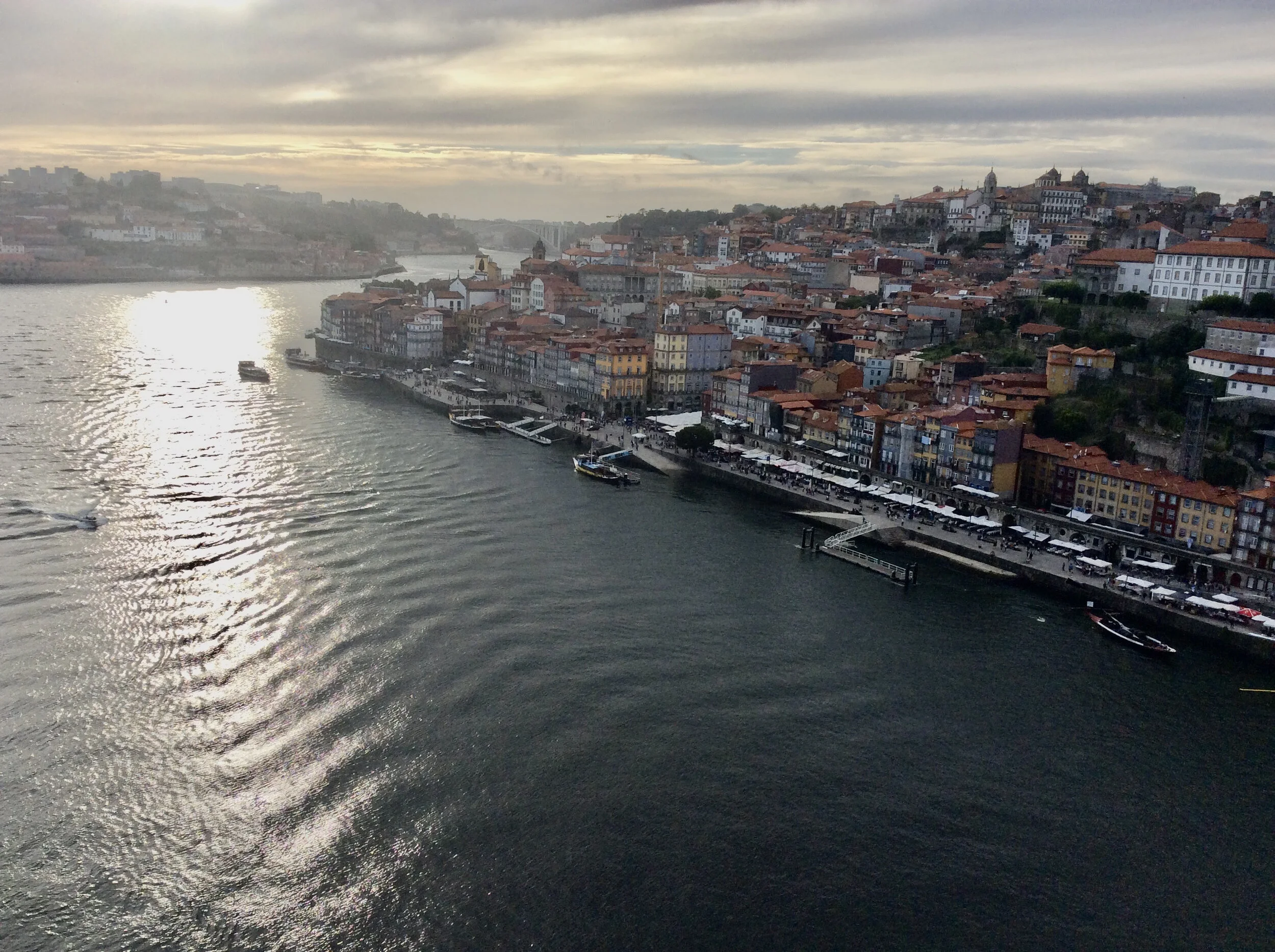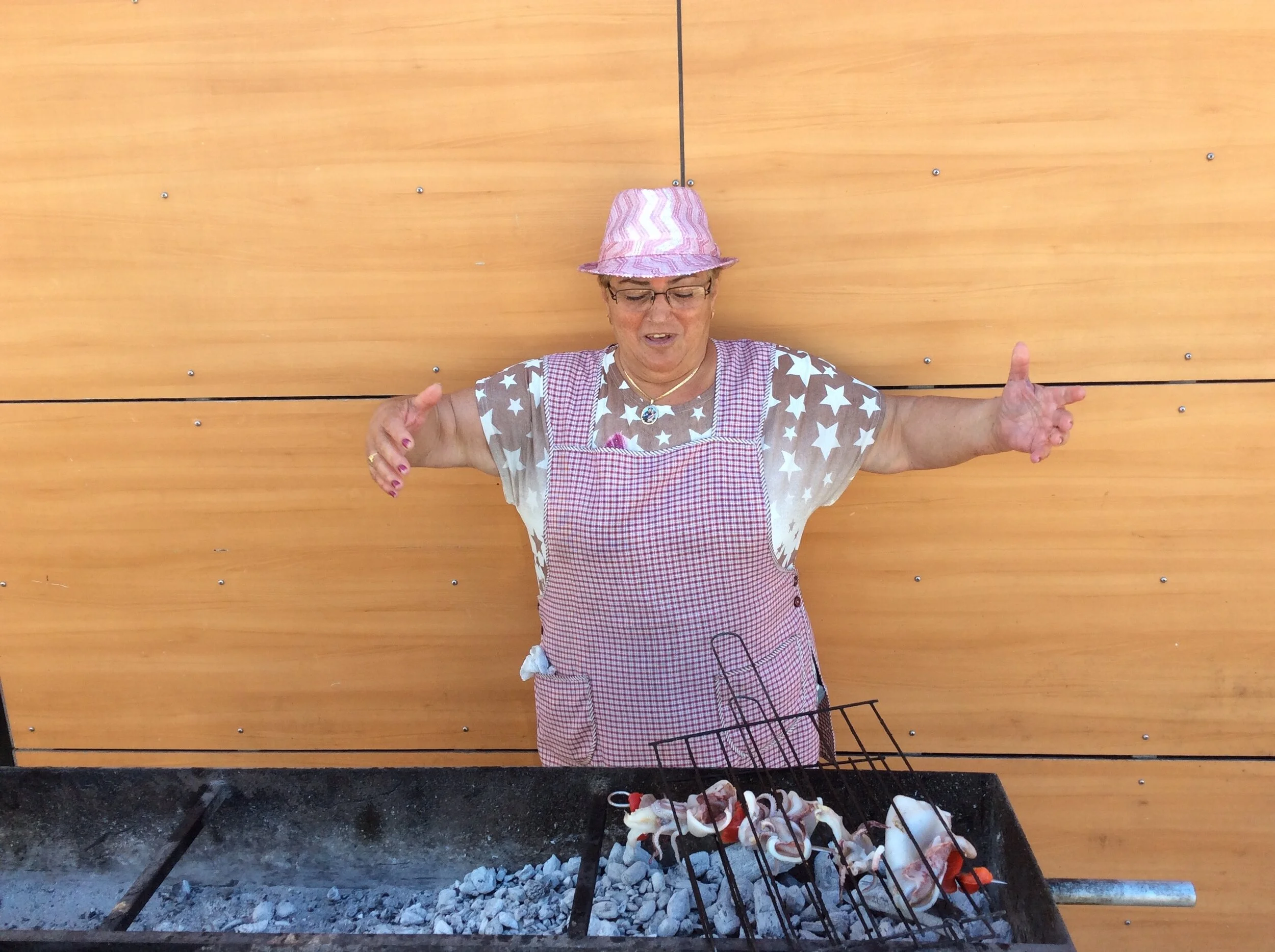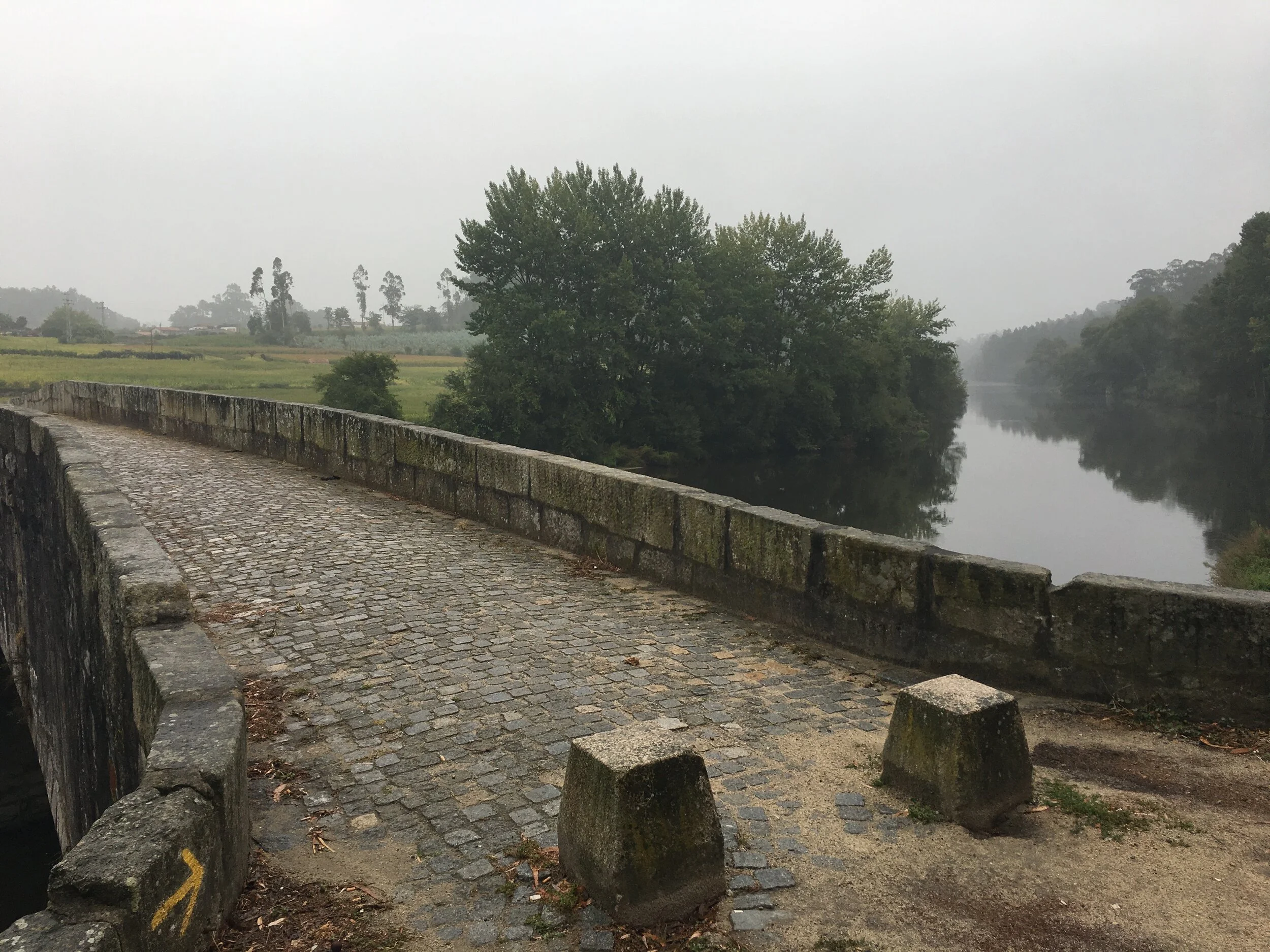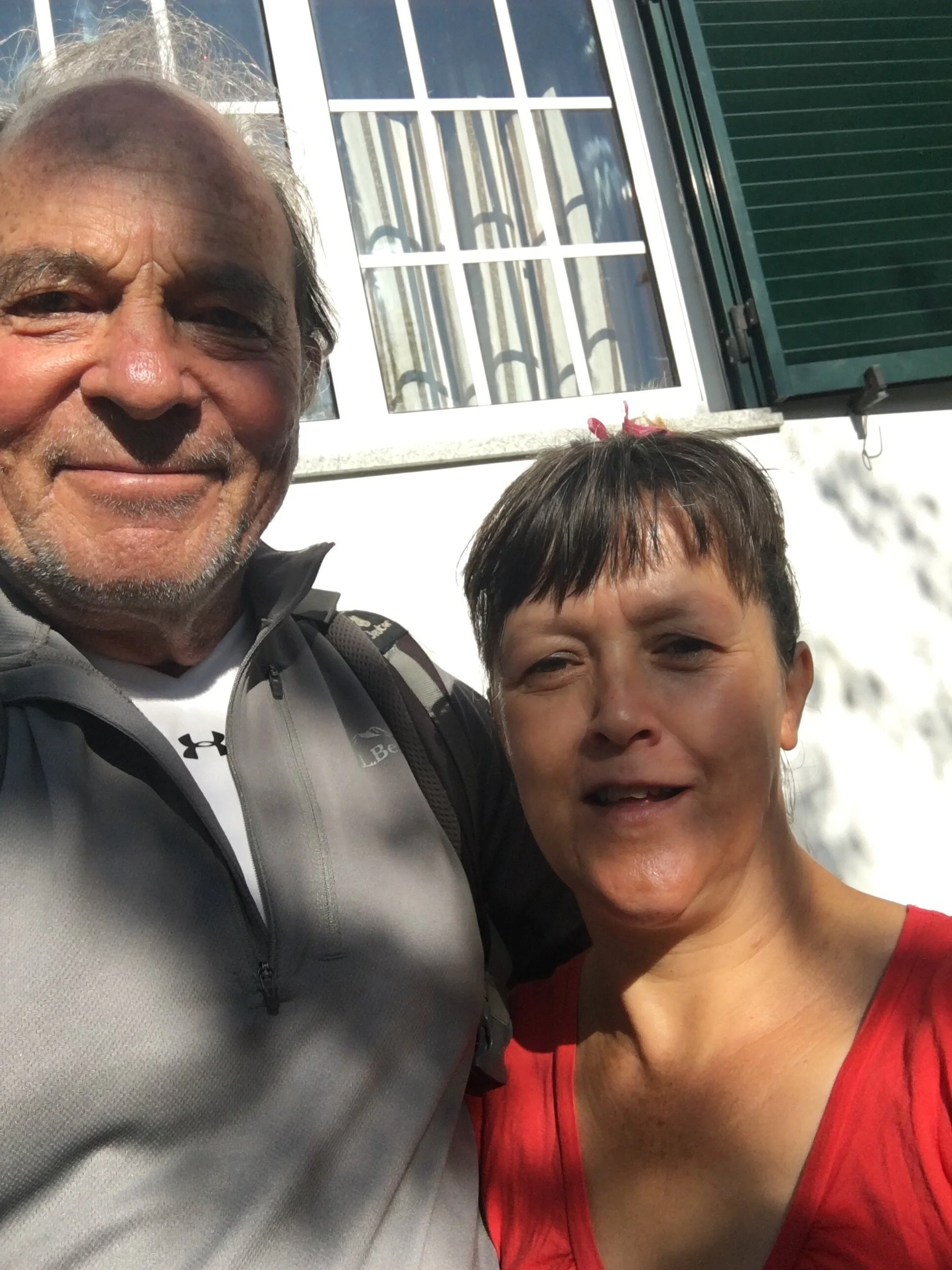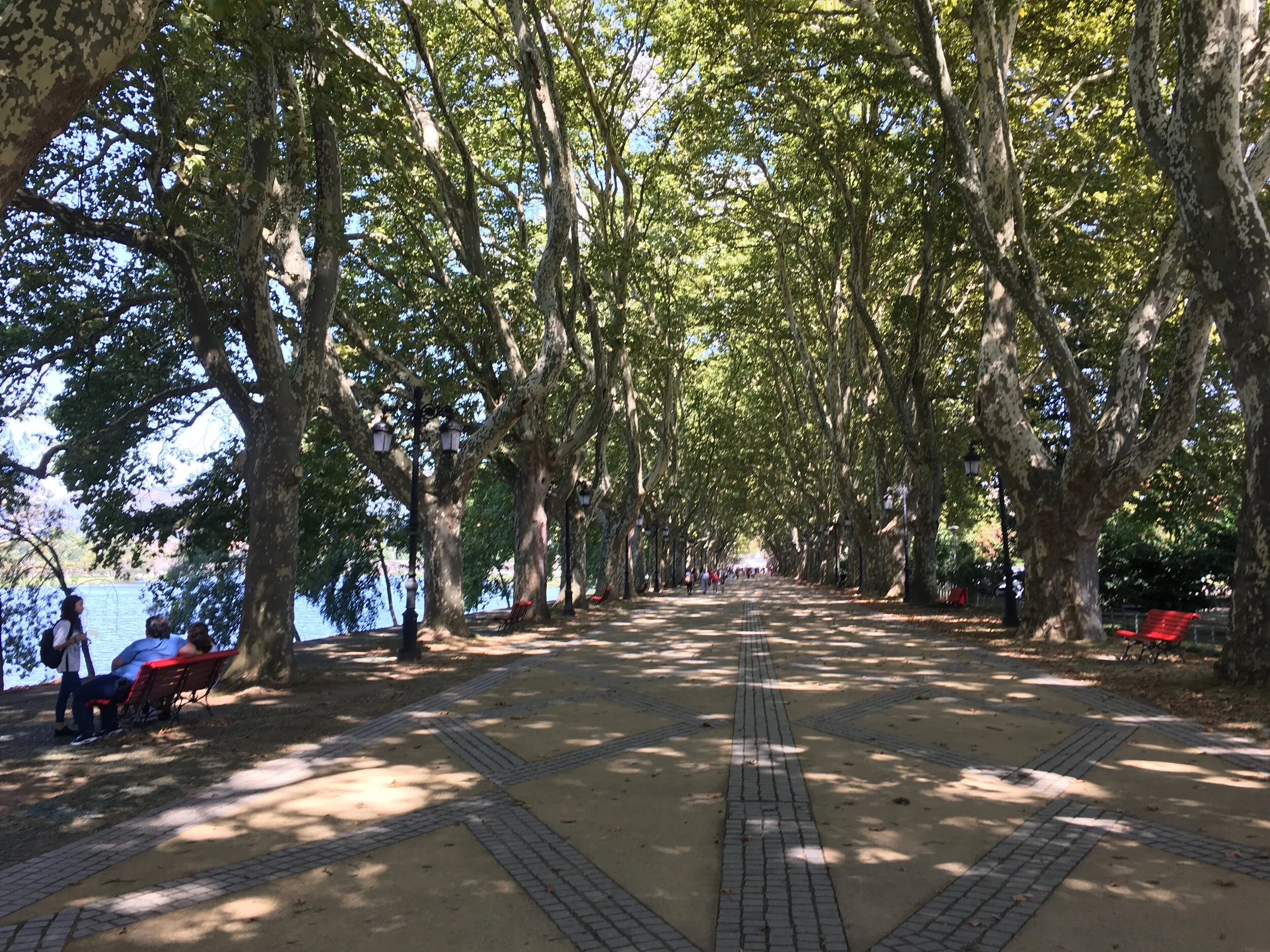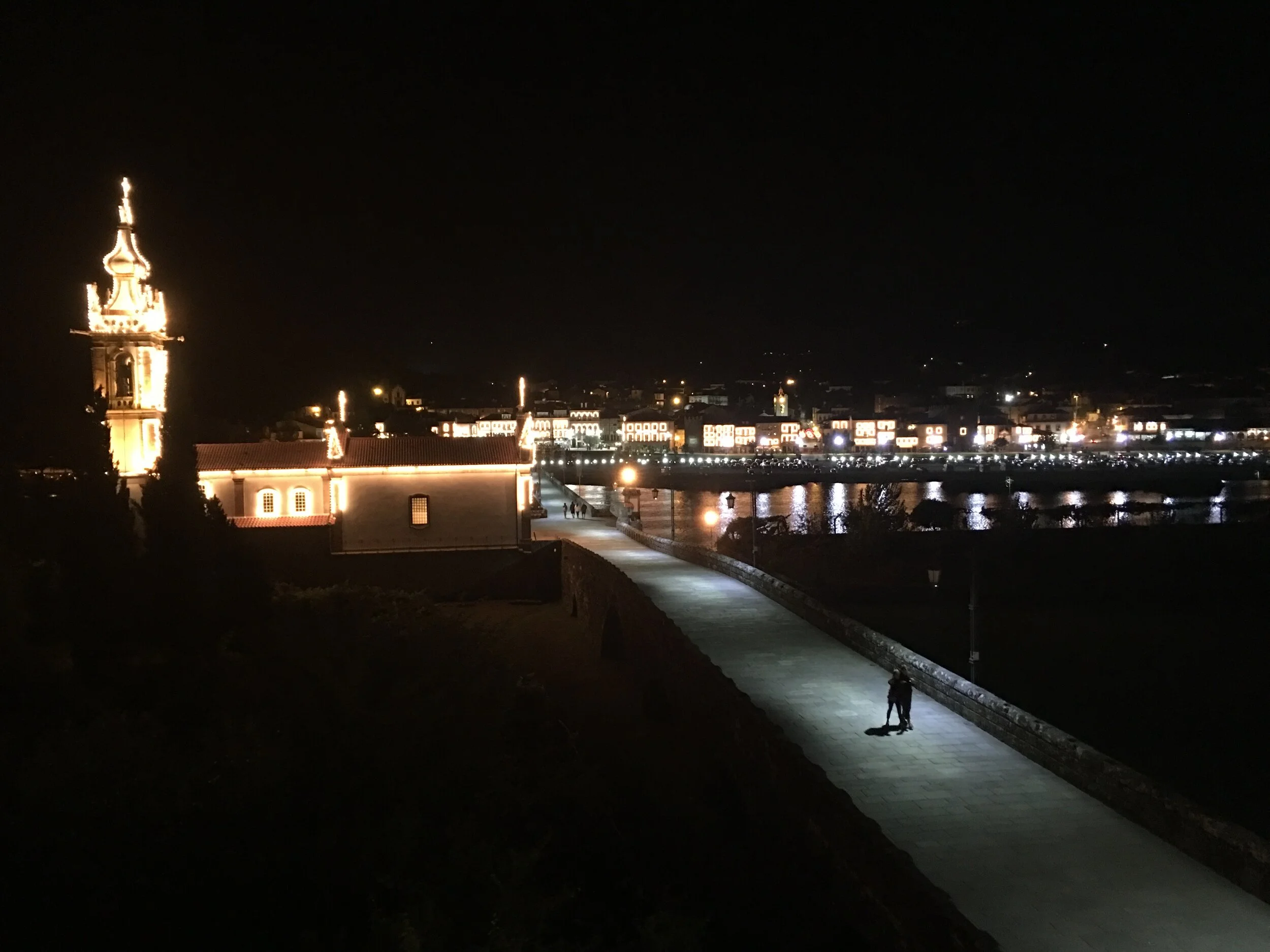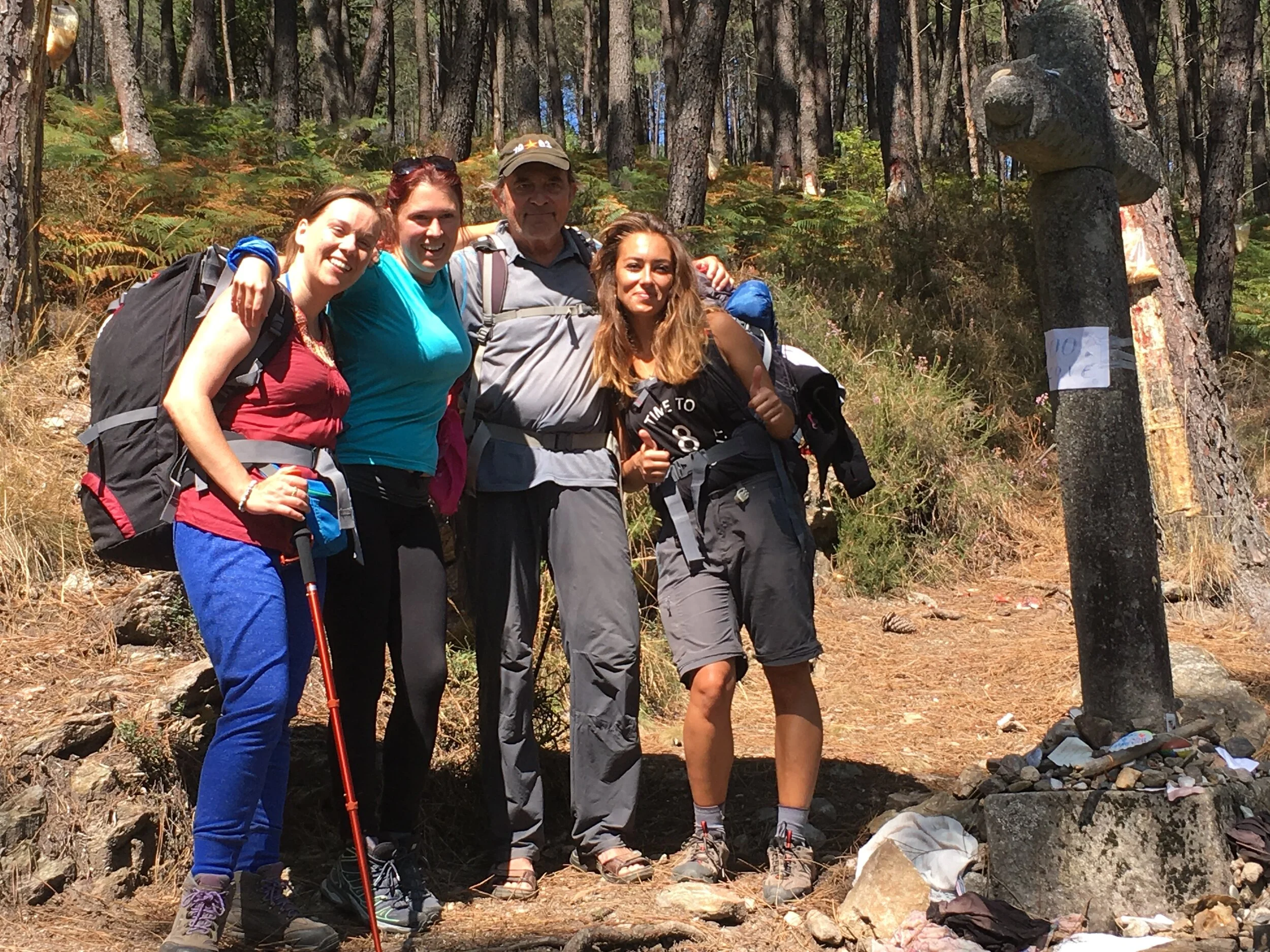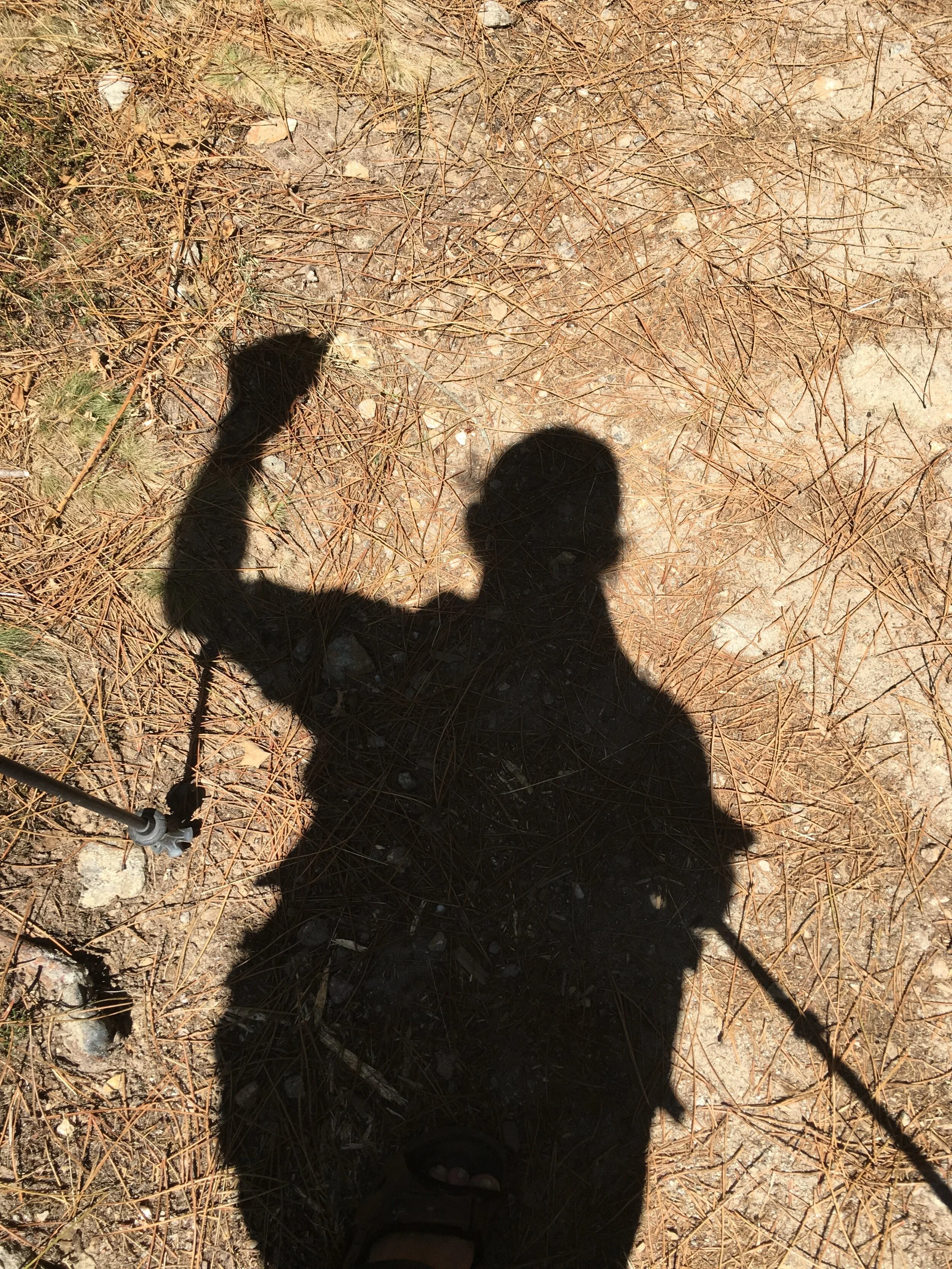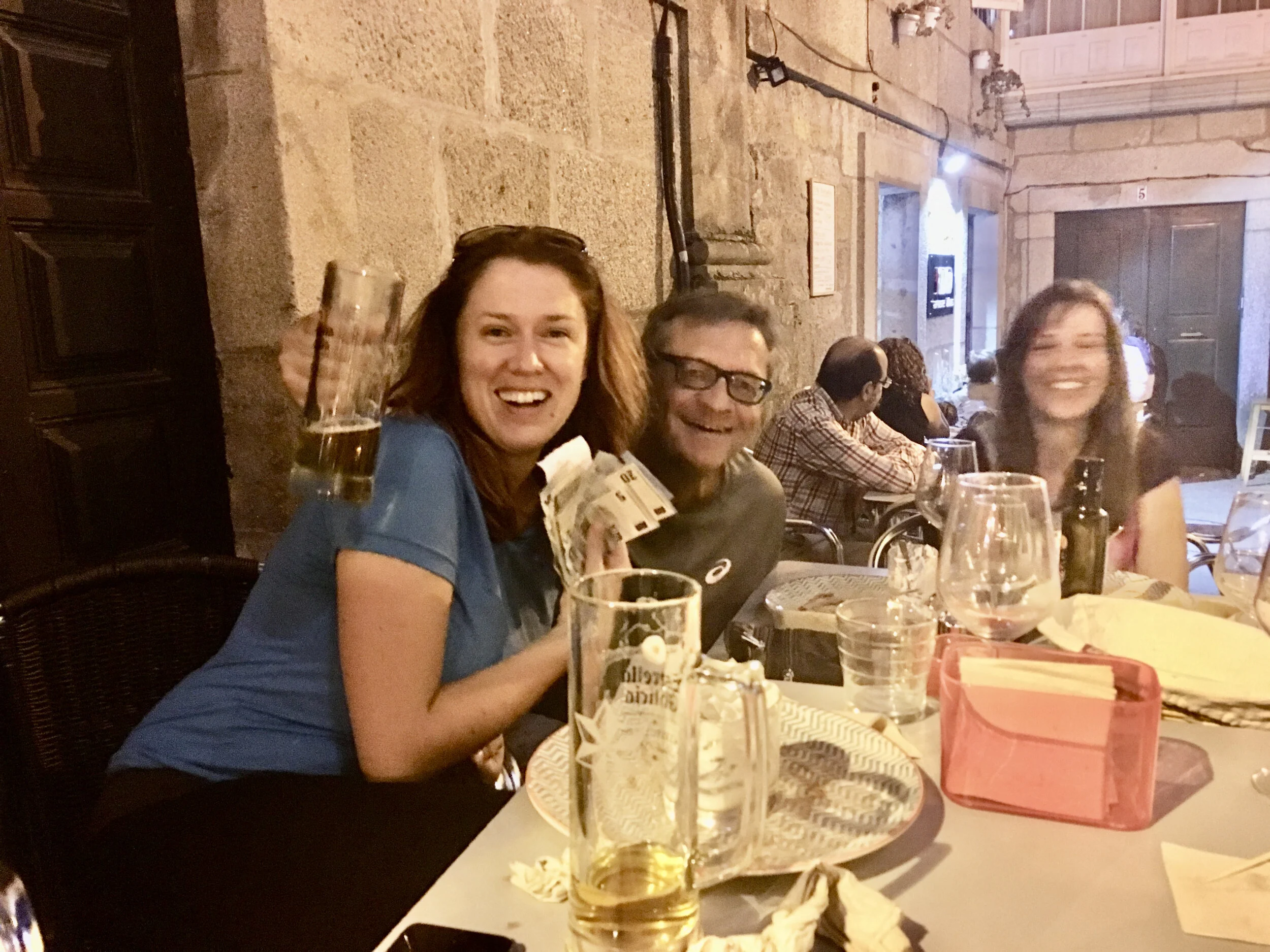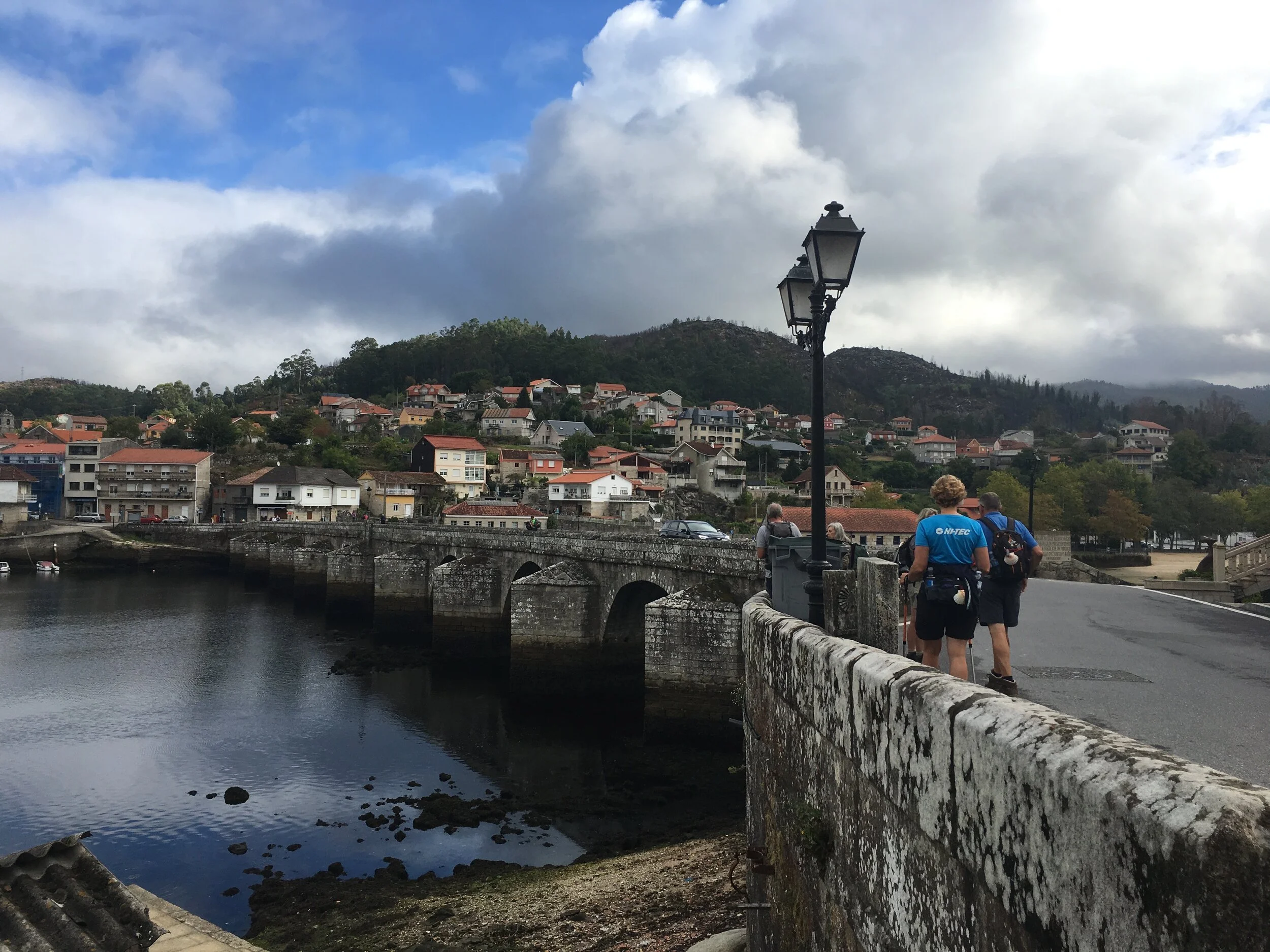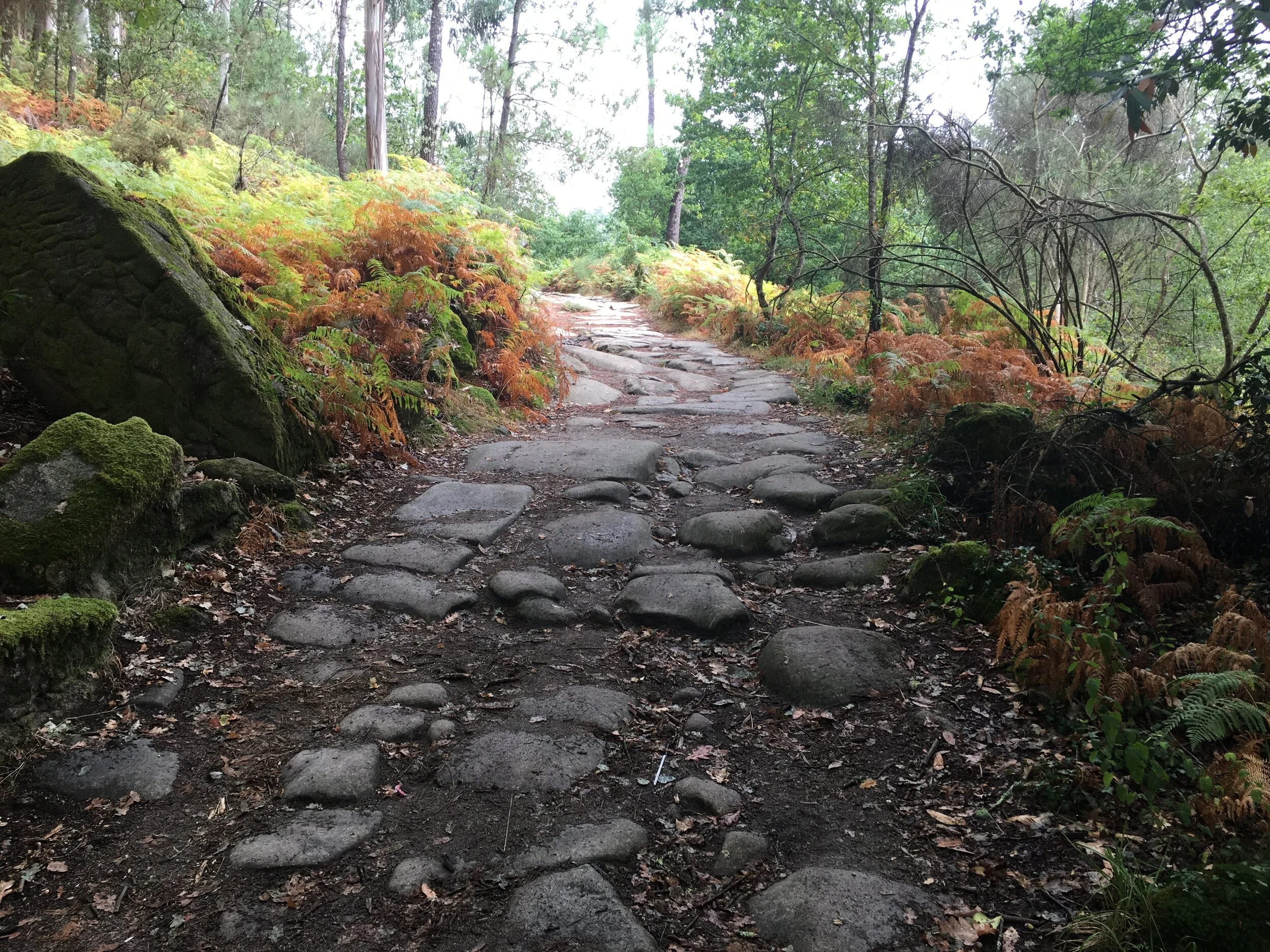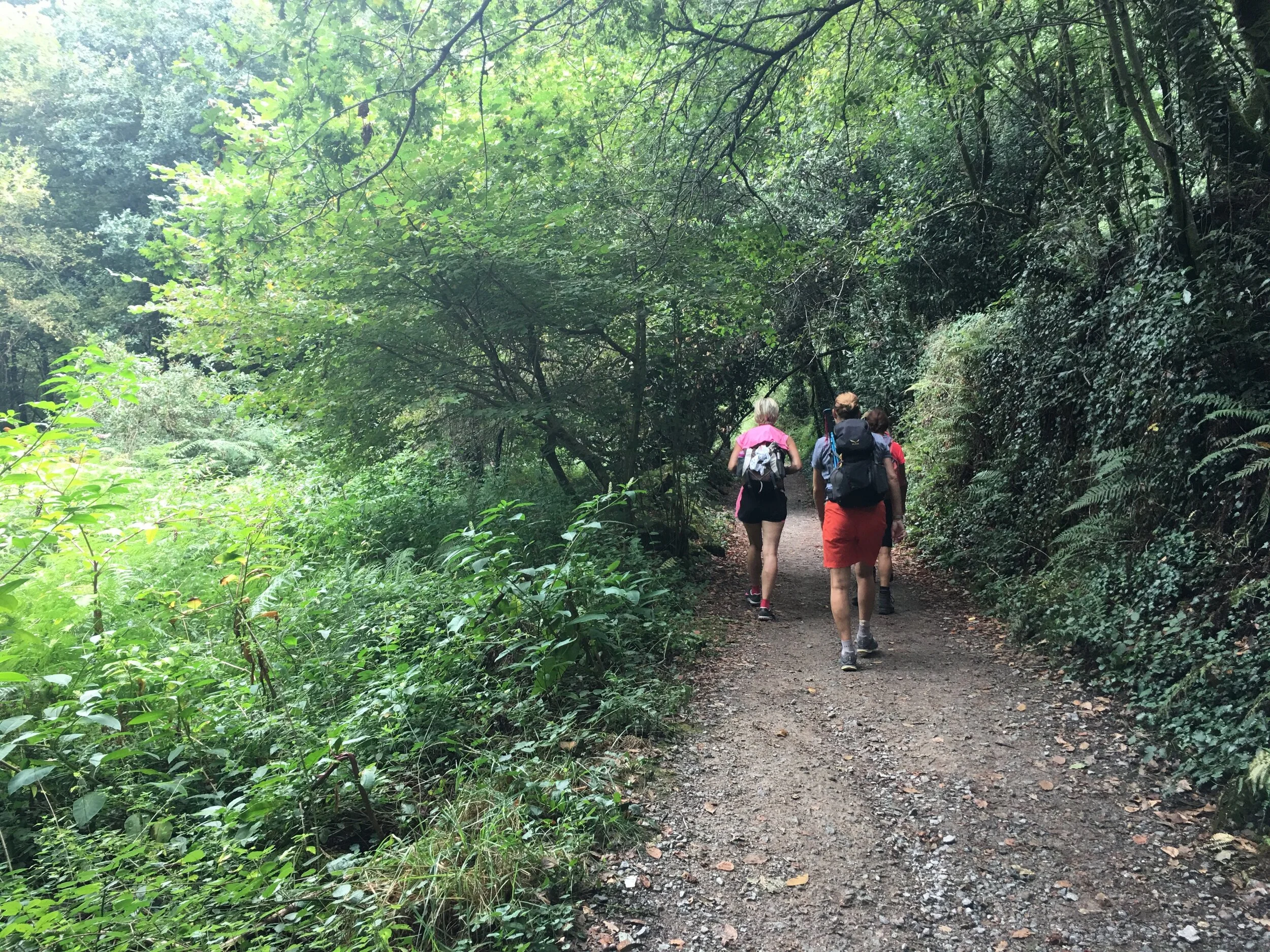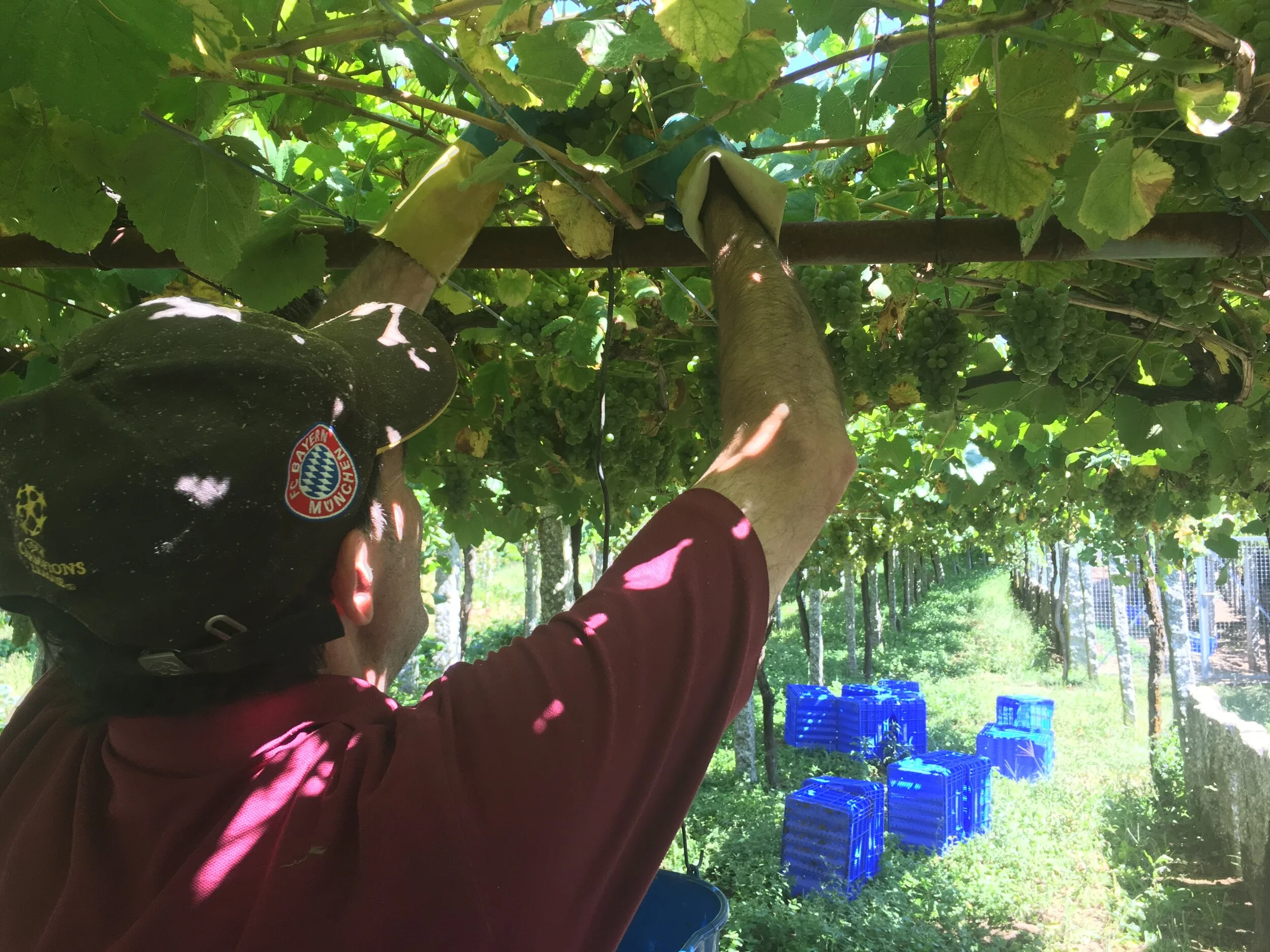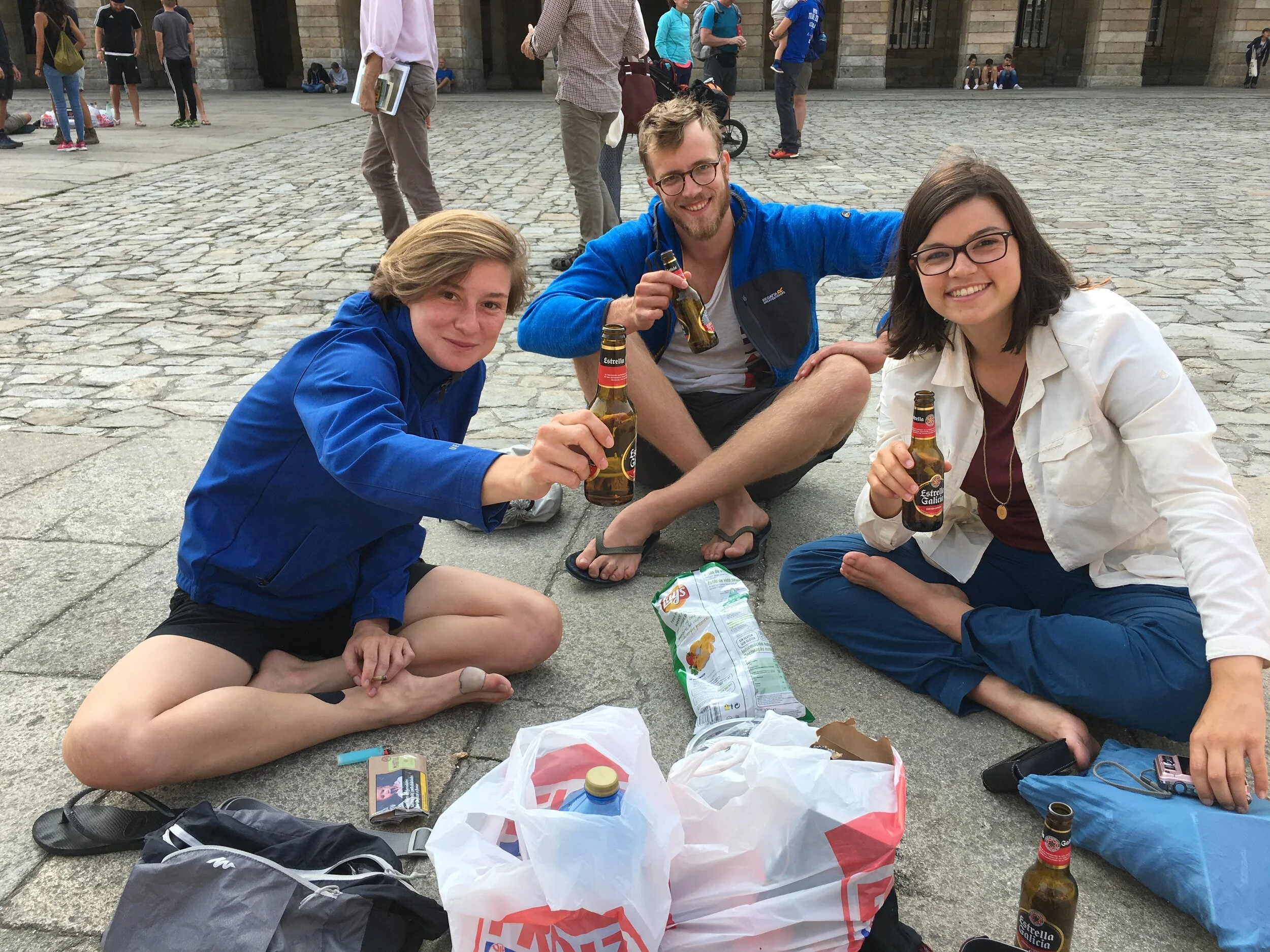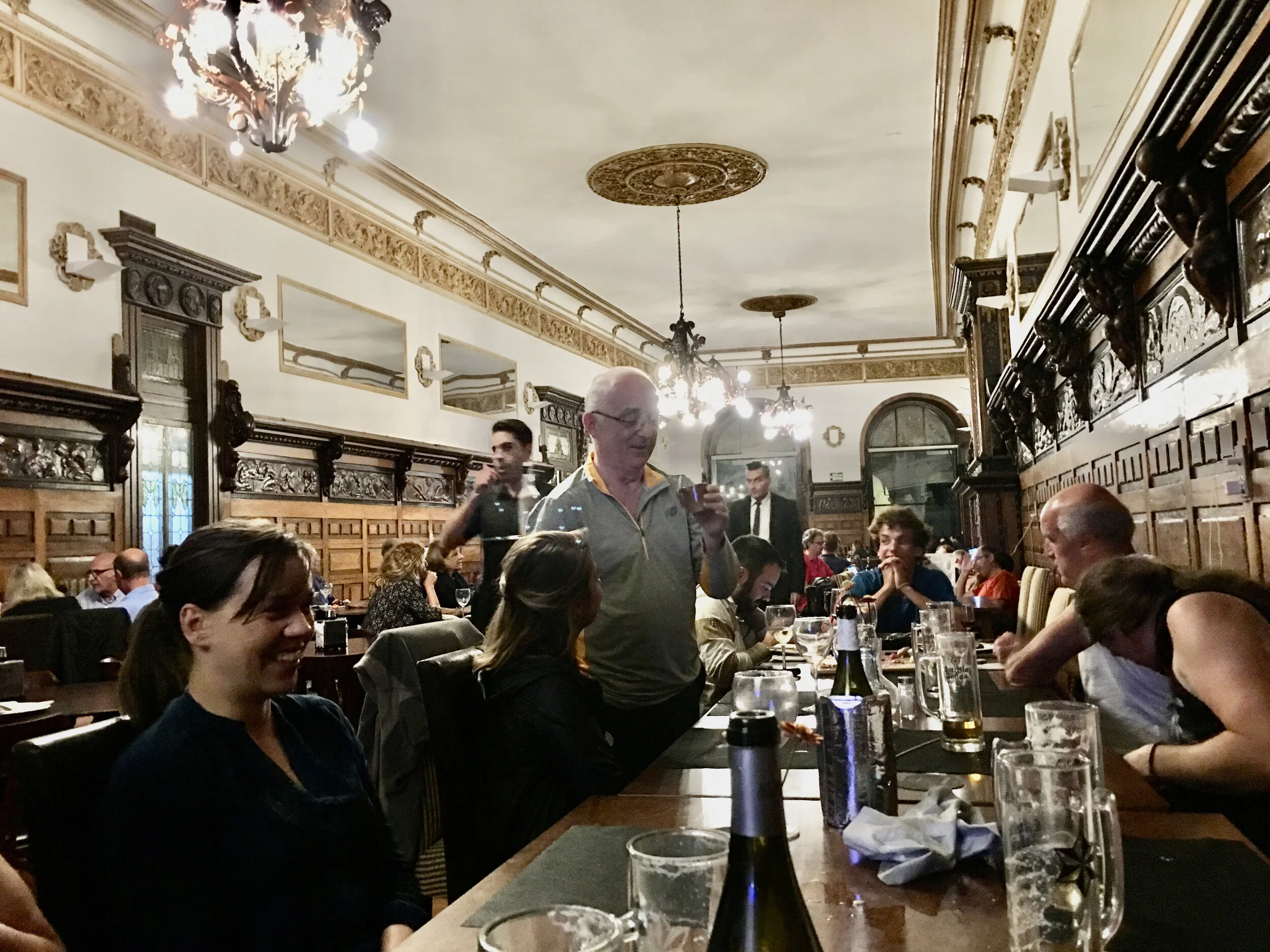Into Galicia
A walk on parts of the Lisbon-Porto leg of the Portuguese Caminho in 2016 proved at times to involve more of the twenty-first century than what I would have preferred of the fifteenth, too little of other pilgrims’ camaraderie that I had so much enjoyed on other walks. But as I moved north I continued to find enough of the origins of the Way to make me want to search for more. So I returned in 2017 to attempt to complete the full route beyond Porto, and found precisely what I had sought the year before.
“‘Why do you do the Way?’ she asked, not in disbelief, as some seem to do, but with sincere curiosity, perhaps to help understand her own motivation. So I tried to answer, but stumbled over too many explanations: the challenge, adventure, culture, history, solitude, community, friendships that develop from those long pilgrimages. Later it occurred to me that I could have left it at that: it is, in fact, the relationships that one makes on the Way that can turn it into an exceptional experience.”
My walk over the Lisboa-Porto section of the Portuguese Caminho had impacted me. If not, why would I want to tell the story and why did I want to go back?
Undoubtedly because I wanted to finish what I had started, discovering northern Portugal and then crossing into a part of Galicia that I did not know and arrive in Santiago de Compostela by that route. But also because I remembered how my toughest experiences were compensated by some of the most pleasant, and the two complementing, balancing each other: as when long walks under intense heat would be relieved by a refreshing shower, cold beer, fine meal and deep sleep, and hours of loneliness on a path with few companions were suddenly brightened by the kind greeting of a 83-year-old barefoot woman working her field of cabbages, how the anxiety of trying to negotiate through the noise and danger of highways could gradually change to the tranquility and safety of a rural road through a pine forest, and a commercial or industrial complex, indistinguishable from anything I could have found at home, vanished as I entered the historic center of a town that still retained some of the culture and customs of Portugal of centuries ago.
Lisbon, August 1, 2016, the trip begins
Near Azinhaga, birthplace of Jose Saramago
At a restaurant in Tomar. A friend wrote, "looks like you need a stiff drink and a bubble bath."
My faithful companions
Carlos Pinheiro, hospitalero of his Albergue in Alvaiázere, applying a wax stamp in my credencial
My gold stamp
Late in the afternoon, alone, far from my destination, out of water, under 110 degrees
The Águeda festival of guarda chuvas, umbrellas
Eucalyptus forests on the way to Albergaria a Velha
The Via Romana approaching Porto
The Rio Douro, Porto
Alvina grilling squid on the beach route out of Porto
The board walk approaching Vila do Conde, the end of my 2016 walk
On August 28, 2017, I resume my walk our of Vila do Conde, here on D. Zameiro bridge over the Rio Ave
With Fernanda, hospitalera of one of the best albergues on any Camino
Approaching Ponte de Lima
The entrance to Ponte de Lima
The view from my bed in the albergue, Ponte de Lima
With Kitti and Marta on my right
My constant partner
The ebullient, irrepressible Marina
Kitti collects to pay the bill
With Marina, Paul and friend at the Casa Consejo, Redondela
Approaching Arcade by the Ria Vigo
Approaching Pontevedra on the Via Romana
Leaving Pontevedra
Harvesting Albariño grapes
Marina and friends in the Praza do Obradoiro
Paul gives a farewell toast at the Cafe Casino in Santiago
“What matters on the Camino is not what one has done over the course of a life, but what one is doing now, in this present moment, and why. In that way the Camino frees you. And it bonds you. It bonds you with those who have shared the experience of the Camino, and it marks moments in your life that you will never forget.”
— Into Galicia
